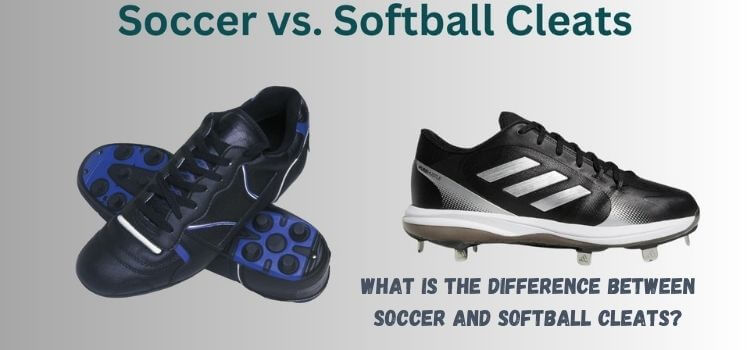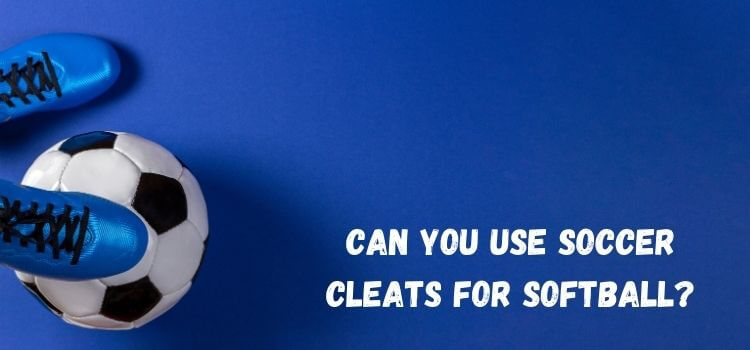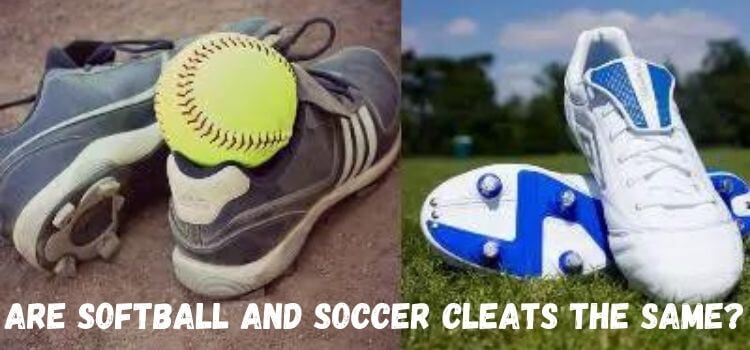As an Amazon Associate, I earn from qualifying purchases
Welcome to our comprehensive guide on the dissimilarities between soccer and softball cleats! If you’ve ever pondered the nuances between these two essential pieces of athletic footwear, you’re in the right place. “What Is the Difference Between Soccer and Softball Cleats?” is a question that often crops up among sports enthusiasts and players alike.
This article aims to explore how soccer cleats differ from their softball counterparts in terms of features, designs, and functionalities. Join us as we explore the key distinctions to ensure you’re laced with the proper footwear for your game.
Let’s begin to understand the unique attributes that distinguish soccer and softball cleats.

Introduction
Regarding sports like soccer and softball, proper footwear can significantly impact performance and prevent injuries. While both sports require specialized cleats, soccer and softball cleats differ due to their demands.
Construction and Design
Soccer Cleats
Soccer cleats, also known as football boots, are designed for use on grass pitches. They typically feature a low-cut design with a lightweight construction to enhance agility and speed on the field.
The outsole of soccer cleats is often equipped with conical or bladed studs to provide traction and stability during quick directional changes and sprints.
Softball Cleats
Softball cleats, on the other hand, are tailored for use on both grass and dirt surfaces commonly found on softball fields. These cleats often have a mid-cut or high-top design to offer ankle support and protection while running and making lateral movements.
The cleat configuration is optimized for grip on grass and dirt, combining moulded and metal studs for traction.
Cleat Pattern
The cleat pattern differs significantly between soccer and softball cleats. Soccer cleats typically have a uniform pattern with either conical or bladed studs evenly distributed across the outsole.
In contrast, softball cleats may have a combination of metal and moulded studs strategically placed to provide traction on various surfaces, including grass, dirt, and turf.
Material
The synthetic leather, mesh, and rubber used in soccer and softball cleats are lightweight and durable. However, the specific materials and reinforcements vary based on the demands of each sport.
Soccer cleats prioritize flexibility and ball control, while softball cleats focus on durability and ankle support.
Support and Stability
Softball cleats tend to offer more ankle support and stability than soccer cleats due to the nature of the sport. Softball players must often pivot quickly while fielding or batting, requiring extra support to prevent ankle injuries.
Soccer cleats prioritize agility and freedom of movement, sacrificing some stability for maneuverability.
Toe Design
The toe design of cleats differs based on the sport’s requirements. Soccer cleats typically feature a rounded or slightly pointed toe to facilitate ball control and accurate passing. In contrast, softball cleats may have a reinforced toe cap to protect against impacts from balls and other players during fielding and base running.
Durability
Softball cleats are designed to withstand the rigours of playing on grass and dirt surfaces, making durability crucial. These cleats often have reinforced stitching, abrasion-resistant materials, and metal studs that can endure repeated use on rough terrain.
Soccer cleats prioritize lightweight construction and may be less durable when subjected to the same conditions.
Flexibility
Soccer cleats are engineered to provide maximum flexibility to enhance agility and responsiveness on the field. The upper material of soccer cleats is often designed to mould to the foot for a snug fit and natural feel.
In contrast, softball cleats offer a balance of flexibility and support to accommodate dynamic movements without compromising stability.
Price Range
The price range for soccer and softball cleats varies depending on brand, design, and material quality. Soccer cleats are more affordable, with entry-level options for beginners and recreational players. Softball cleats may be more expensive due to added features such as ankle support and multi-surface traction.
Brand Variations
Both soccer and softball cleats are available from various brands, each offering unique features and technologies. Popular soccer cleat brands include Nike, Adidas, Puma, and Under Armour, known for their innovative designs and performance-enhancing features.
Brands like Mizuno, New Balance, Easton, and Rawlings offer softball cleats catering to the specific needs of softball players.
Personal Preference
Ultimately, choosing between soccer and softball cleats comes from personal preference and playing style. Some players may prefer the lightweight and agile feel of soccer cleats, while others prioritize the stability and traction of softball cleats.
Trying on different cleats and considering factors such as fit, comfort, and performance can help players find the proper footwear for their needs.
Maintenance
Proper maintenance is essential for soccer and softball cleats to last a long time. Dirt and debris can adversely affect traction and performance and should be removed from cleats after every use. Soccer cleats with removable studs may require periodic replacement to ensure optimal grip on the field.
Softball cleats should be inspected regularly for wear and tear, especially around high-stress areas like the toe and heel.
Conclusion
While soccer and softball cleats share some similarities in construction and design, there are distinct differences tailored to the unique demands of each sport. Players need to understand these differences to choose footwear for optimal performance and comfort.
Frequently Asked Questions (FAQs)
While soccer cleats may provide adequate traction on grass surfaces, they may offer a different level of support and stability required for softball. It’s best to choose cleats designed explicitly for softball to prevent injuries.
In most organized soccer leagues, metal studs are prohibited due to safety concerns. Soccer cleats typically feature rubber or plastic studs suitable for grass pitches.
Softball cleats with moulded studs are suitable for turf fields, providing sufficient traction without causing damage to the surface. However, metal studs may be prohibited on turf fields to prevent turf shredding.
The lifespan of cleats depends on factors such as frequency of use, playing surface, and maintenance. Cleats should be replaced after every season or whenever signs of wear and tear are evident.
Softball cleats are designed specifically for softball demands and may not provide optimal performance or support for other sports. It’s recommended to use sport-specific footwear for the best results.
Read Our More Articles
- Can You Use Soccer Cleats for Softball? The Ultimate Guide
- Are Softball and Soccer Cleats the Same? A Closer Look
- How to Stretch Soccer Cleats: Tips and Techniques for a Perfect Fit
As an Amazon Associate, I earn from qualifying purchases


